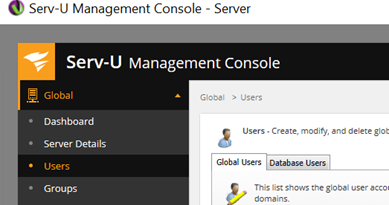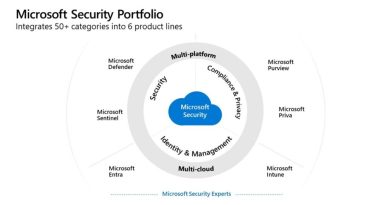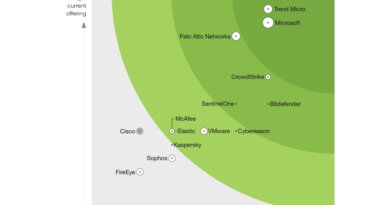Microsoft unpacks comprehensive security at Gartner and Forrester virtual events
Every day, Microsoft is committed to maintaining comprehensive security for all across our interconnected global community. With that purpose in mind, we recently sponsored the 2021 Gartner Security and Risk Summit and 2021 Forester Security and Risk Forum, where we discussed ongoing changes in the security landscape. As a Leader in five Gartner® Magic Quadrant™ reports and eight Forrester Wave™ categories, our team was keen to share insights about new threats, the evolution of Zero Trust security, managing compliance, risk, and privacy, and building tomorrow’s talent.
Comprehensive security

Vasu Jakkal, Corporate Vice President (CVP) of Microsoft Security, Compliance, and Identity, sat down with Phil Montgomery, General Manager for Security Product Marketing GTM, at the 2021 Gartner Security and Risk Summit for a wide-ranging fireside chat on the evolving state of cybersecurity. Phil started by addressing the elephant in the room—how the past 18 months have altered the security landscape in ways we’re still trying to understand.
“When the pandemic started, businesses had to become digital overnight,” Vasu points out. “With employees turning to personal devices to get the job done, that meant we had an exponential increase in the amount of digital attack surfaces. We saw an incredible increase in the sophistication and frequency of cyberattacks.” Vasu cites the attack on Colonial Pipeline as an example of how attacks have become more sophisticated and relentless in 2021. She also cites the phenomenon of cybercriminals expanding their operations by offering ransomware as a service. “Organizations are facing new economic challenges along with those brought by hybrid environments—multi-cloud and multi-platform,” she reiterates. “All these factors have come together to increase the complexity we face in cybersecurity.”
“You can’t secure a door and leave a window open. You have to think about your security posture as an interdependent whole—both external and internal threats.”—Vasu Jakkal, CVP of Microsoft Security, Compliance, and Identity
Eliminating complexity is one reason why Microsoft chose to integrate Microsoft Sentinel, our cloud-native SIEM + SOAR solution, and Microsoft Defender, our extended detection and response (XDR) tool. Integrating the two solutions simplifies detection and response by providing a bird’s-eye view of your digital estate, as well as enabling your security operations center (SOC) to investigate and resolve incidents at a granular level. “That kind of visibility and rapid response can really make a difference in the early stages of a ransomware attack,” Vasu stresses. “The reality today is if you’re connected; you’re vulnerable. The only way to protect a remote workforce is to have left-to-right and top-to-bottom security. That means security, compliance, identity, device management, and privacy are all interdependent.”
Beyond the technology, Vasu also points out: “The number one thing every security leader should be doing right now is building and practicing a plan with all essential members of your team. Do you have a great communications plan? Do you have a great response plan?” She also stressed the importance of training and empowering employees at every level of the organization to identify suspicious activity and escalate it.
Zero Trust comes of age in 2021

Earlier this month at the 2021 Forrester Security and Risk Forum, Microsoft CVP of Program Management Alex Simons also sat down for another fireside chat with Nupur Goyal, Microsoft Group Product Marketing Manager for Identity Security and Zero Trust. Alex also was struck by the rapid changes in enterprise security over the past 18 months. “If you think about the world we were in before [the pandemic],” he explains, “you were mostly protecting desktop PCs and laptops; most of your apps were on-premise. You didn’t have to worry about nation-state attackers. That’s why it’s important for enterprises to move away from the old perimeter-based security model to a Zero Trust approach.”
“The thing to remember about a Zero Trust approach, as the saying goes: you don’t have to eat the whole elephant at once. Just gradually expand multifactor authentication across your employees, beginning with those that have the access to the most important applications.”—Alex Simons, Microsoft CVP of Program Management
For some organizations, Zero Trust requires a big shift in thinking. It’s a mindset that assumes all activity, even by known users, could be an attempt to breach your systems. Alex cites attackers who are now targeting identities—both through users and the software itself—as a new threat to consider. “You really need a system that can look at what your users and their devices are doing,” he explains. “That includes all the software services that can access your resources. It really has to be a comprehensive approach. The workload identities, the ones that are your software, that’s a new thing. And you want to make sure you have a good plan in place for that.”
Alex recommends organizations begin by applying multifactor authentication to all privileged admin accounts. He also pointed out the importance of making sure that every device accessing your resources is well-managed. “Microsoft Endpoint Manager and Microsoft Defender for Endpoint help achieve that. You want to be sure every device is encrypted and protected with a PIN, but also you want each to be in a clean state from an antivirus standpoint.”
Roughly 76 percent of Microsoft customers have already begun Zero Trust implementation. Because we’re now in a boundary-less world of hybrid work, Zero Trust is exactly the security approach that’s needed. The foundation of Zero Trust is based on the three guiding principles: verify explicitly, use least-privilege access, and assume breach. Microsoft is building an identity platform to simplify and secure all relationships among employees, partners, customers, workloads, and smart devices—whether you’re a developer, an IT administrator, or a user. “There are 579 attacks happening every second,” Vasu adds. “So, effective security has to start with a strong identity foundation. We see identity as the ‘trust fabric’ of this new boundaryless collaboration.”
Managing compliance, risk, and privacy
For organizations across every sector, a tremendous amount of data is accessed, processed, and stored every day. This, along with an ever-growing universe of data regulations, is creating complexity and compliance risk. “We have personal data, which is in movement and in flux all the time,” Vasu explains. “The lines between work and home networks are all blurring. So that creates a lot of pressure about how to protect data, and how to ensure that all regulations are being followed.”
Many organizations use manual processes to discover how much personal data they have stored. There’s often a lack of actionable insights to help mitigate security and privacy risks. That’s why Microsoft recently announced privacy management for Microsoft 365. This new solution helps organizations identify critical privacy risks, automate privacy operations, and empower employees to be smart when they’re handling sensitive data.
For chief information security officers (CISOs) and risk officers, Vasu proposes a four-fold solution for balancing compliance and privacy: First, know your data. “Who’s accessing your data?” she asks. “How is your data moving? Do you have the right label? Do you have the right sensitivities? How are you protecting against insider risk? Do you have the right permissions level?” Second, establish a baseline of activity and measure anomalies to that baseline. You can’t just look at the world through the auditors’ eyes—pass or fail. You need to help your team see how they’re making progress. Third, partner with providers who can help you stay on top of changes in laws and regulations in all markets where you operate. Fourth, establish a collaborative process internally to address the risks when they arise. “It’s not just a security problem; it’s an organizational problem,” she stresses. That means ensuring that HR, legal, compliance, and risk teams are all working with your security operations center.
Zero Trust is not just about outside-in protection; it’s also inside-out. Organizations need to build compliance protections into processes to defend against insider threats. “You can’t secure a door and leave a window open,” is how Vasu sums it up. “You have to think about your security posture as an interdependent whole—both external and internal threats.” Organizations can take an easy first step just by implementing passwordless technologies like Windows Hello for desktops or the Microsoft Authenticator app for mobile devices.
Building tomorrow’s talent
For almost every two cybersecurity jobs in the United States today, a third job is sitting empty because of a shortage of skilled people. That’s why Microsoft is launching a national campaign with United States community colleges to help skill and recruit 250,000 people into the cybersecurity workforce by 2025:
- Community colleges are everywhere. There are 1,044 community colleges located in every state and territory, and in every setting: urban, suburban, rural, and tribal.
- Community colleges are more affordable. Tuition averages just $3,770 annually (versus $10,560 for four-year public colleges). Moreover, 59 percent of community college students can access financial aid.
- Community colleges are diverse. Students at community colleges are 40 percent Black or African American or Hispanic. In addition, 29 percent are among their family’s first generation to attend college, while 20 percent are students with disabilities, and 5 percent are veterans. And 57 percent of students at community colleges are women.
“In March of this year, we announced Microsoft’s Career Connector,” Vasu explains, “a service that will help place 50,000 job seekers skilled by Microsoft’s nonprofit and learning partners in the Microsoft ecosystem over the next three years.” Career Connector has a specific focus on women and underrepresented minorities in technology. “I’m proud to report that our global skills initiative has reached more than 30 million people in 249 countries,” she adds. Microsoft is also extending through the end of 2021 all the free courses and low-cost certifications offered in our global skilling initiative through Microsoft Learn. To help fill talent gaps in compliance, Microsoft also offers certification courses for security, compliance, and identity. “No matter who you are, you can be a defender.”
The attackers in today’s asymmetric cyberwar come from all backgrounds, ethnicities, and regions. For that reason, we as defenders need to be just as diverse. “Along with diversity, inclusion goes hand in hand,” Vasu explains. “It’s important that we commit to hiring from places we may have not thought about before, to build a place where everyone feels like they belong.” She sees solving the talent shortage as a three-step process: get more people aware of cybersecurity; help them build the skills they need; and create spaces where everyone feels they can do their best work. As Vasu sees it: “Ultimately, security is all about humans. Whether you’ve been in the workforce for 30 years and want a change, or you’re just starting your career; either way, there’s a place for you here.”
To learn more about Microsoft Security solutions, visit our website. Bookmark the Security blog to keep up with our expert coverage on security matters. Also, follow us at @MSFTSecurity for the latest news and updates on cybersecurity.
READ MORE HERE



